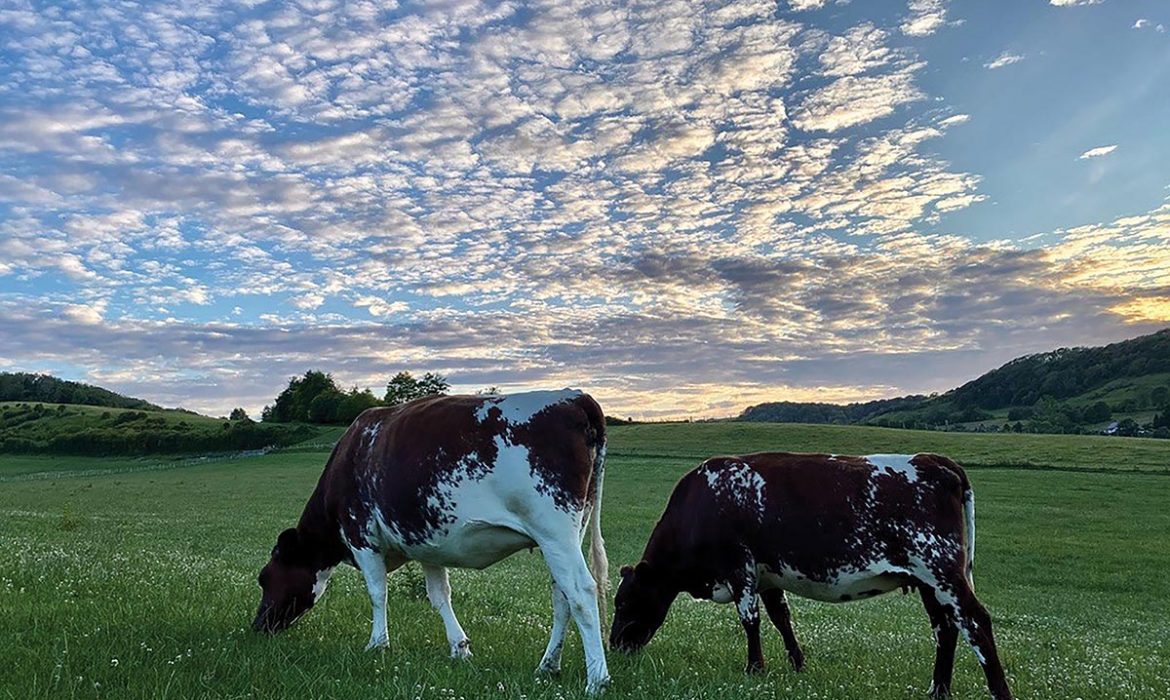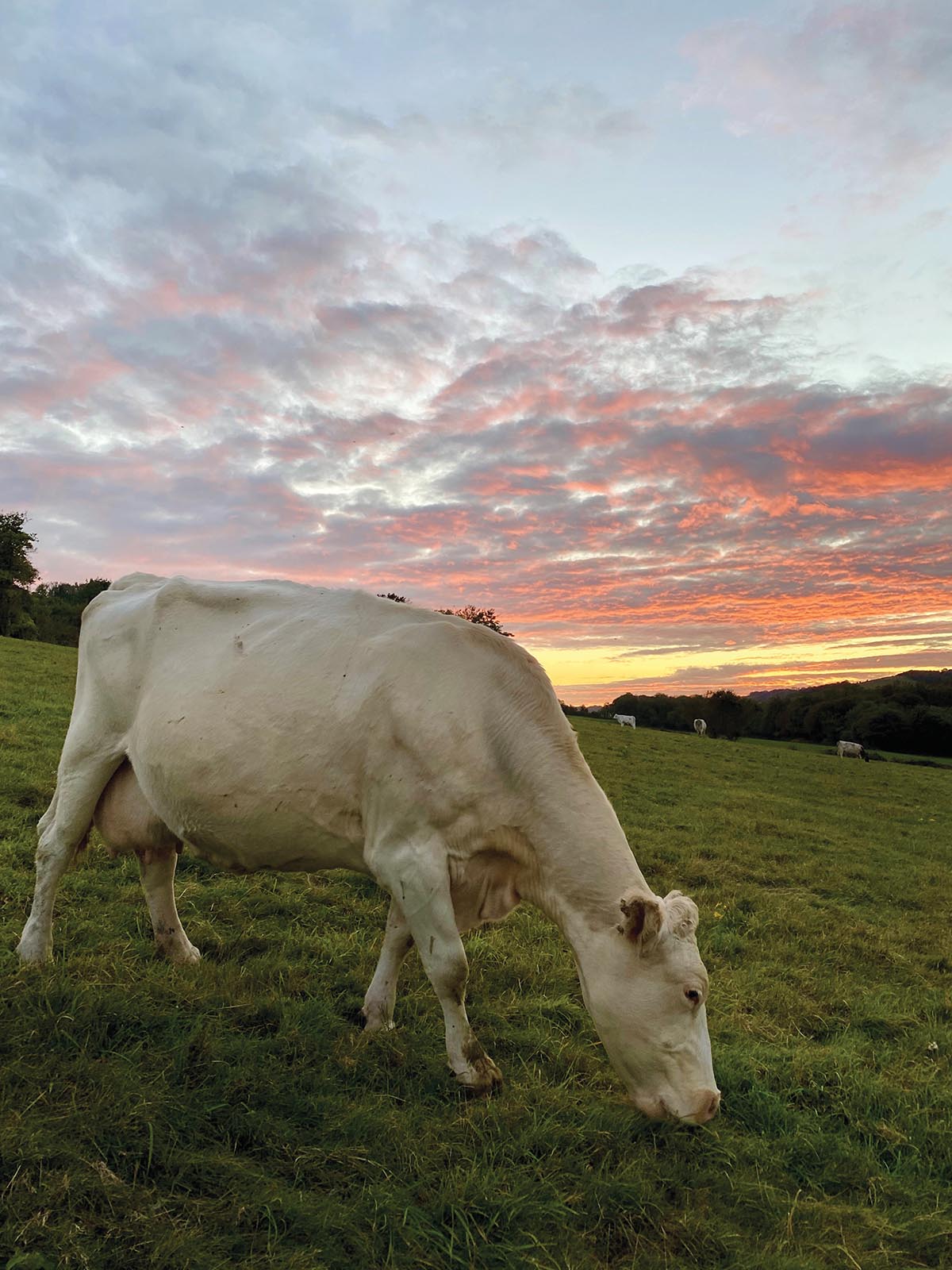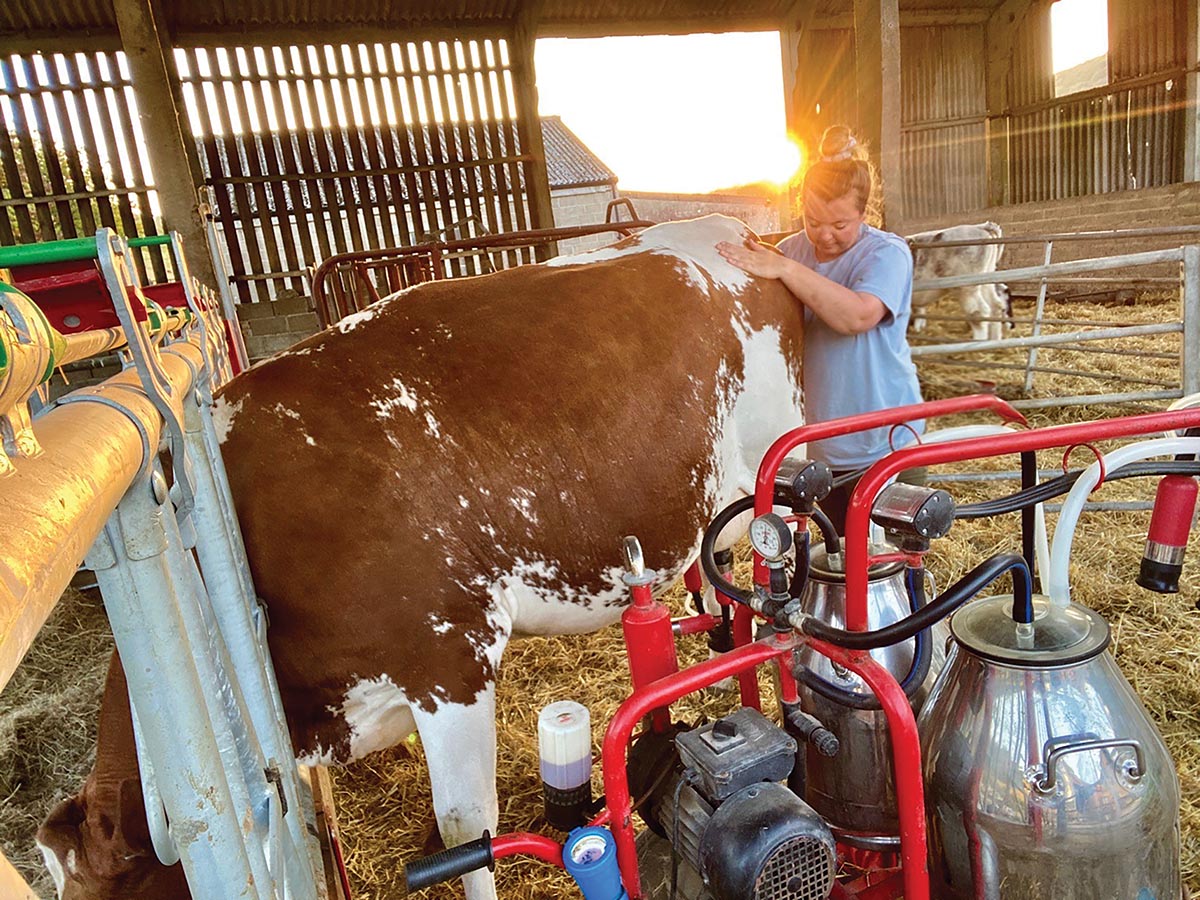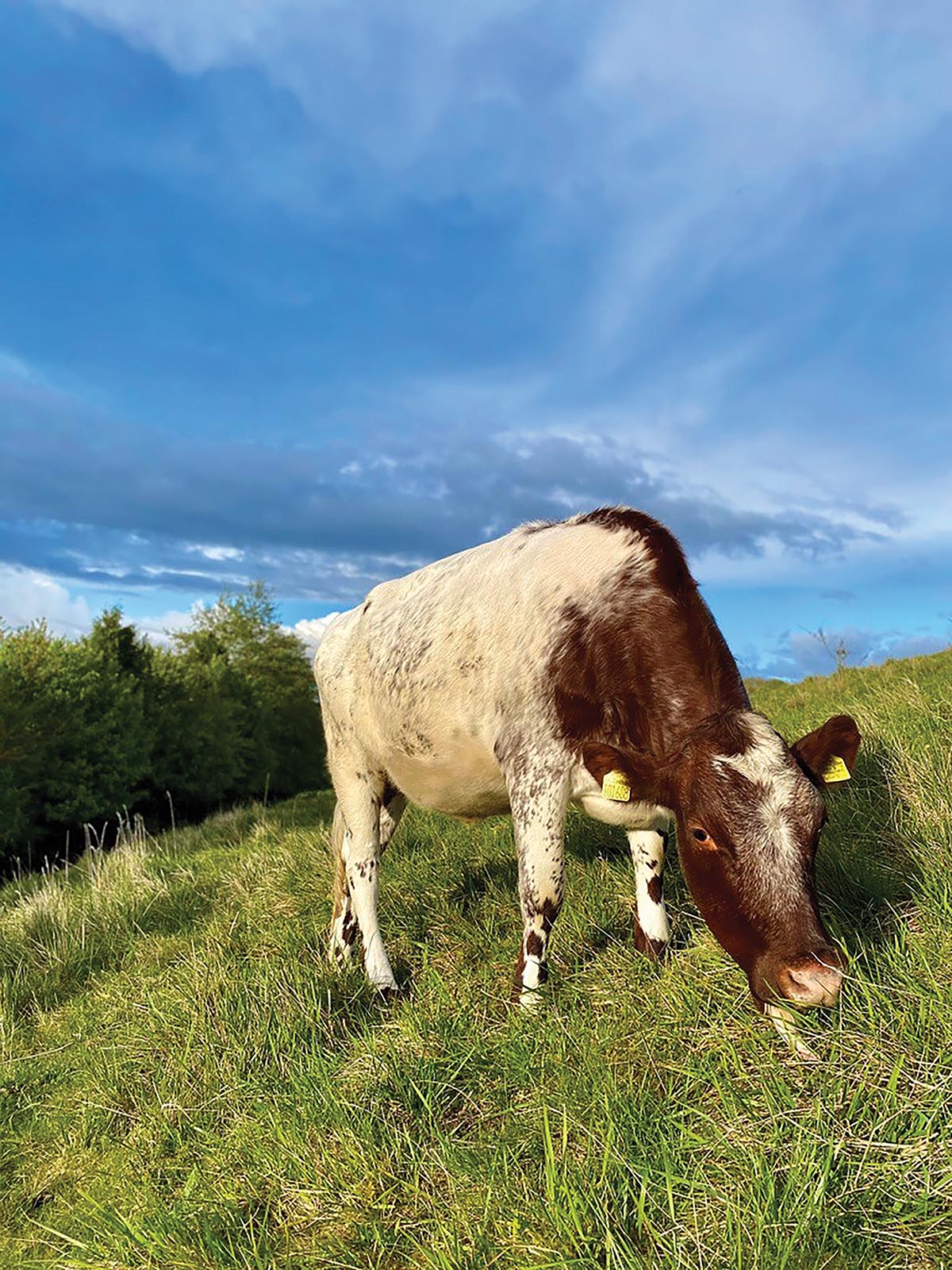Farming is changing.
It has been changing for centuries, but it feels like this is new. It’s not only farming that is changing, but there has been a shift globally into how the human race is living. As farmers, we are no longer responsible for just our stock and our land, but also for the impact they have on the environment.
For us reading this journal, it’s likely that most of us have been custodians of the environment for a long time, especially as we farm Shorthorns, arguably the most sustainable of all the dairy breeds! But there’s no harm in always striving to do better. After all, British farmers have committed to reaching net zero greenhouse gas emissions by 2040.
There can be no doubt, our climate is breaking down. There are many arguments and theories as to why this is happening. A lot of people seem to, unfairly, enjoy pointing the finger solely at agriculture. Research shows that global agriculture contributes to merely 8.5% of global greenhouse gas emissions, and British agriculture is estimated to be contributing up to 50% less than the global average.
This doesn’t, however, mean that we shouldn’t be playing our part and contributing to lowering emissions. And that is where our key word comes in: SUSTAINABILITY.
Farming in the 21st Century must strive to be sustainable and ethical whilst also being sufficiently productive. In my opinion, the way to achieve this is through farming Native breeds, extensively, through a low input system, homing in on increasing biodiversity. The traits that Shorthorns have been famed for throughout their vast history are longevity, fertility, locomotion and an excellent capability to convert forage to milk extremely economically. These are what we need to be focusing on now.
So many other dairy breeds are competing on their milk production volume, or solids volume, but how many of those breeds can produce quality milk via a primarily forage-based system, grazing economically and efficiently, lactation after lactation? In order to utilise these fantastic traits, we must not allow attributes of the Shorthorn to be lost. It’s all too easy to try and compete with other modern dairy breeds through blending genetics, which of course, in moderation, can have its benefits. However, this will slowly be negating all of the fantastic characteristics that make our breed unique. When we look to the future, what we need to do is embrace, publicise, and shout about the brilliant, traditional Shorthorn traits that we all know and love, and that make our breed different to the rest.
Even the new stewardship strategies are predicted to utilise the value of Native breeds. Through one of the Government’s new proposals of ‘Environmental Land Management’, it is said that a payment will be made to farmers with Native breeds, so we can predict there is going to be an increase in interest in the Dairy Shorthorn. Although no-one can predict the Government’s new approach to farming following the disbanding of BPS payments (not sure even the Government knows their plans yet!!), the tides are already turning in favour of farming regeneratively.
Dairy Shorthorns and regenerative farming practices fit hand in hand perfectly. Shorthorns are able to graze for long periods of the year due to their small frames and strong constitution, minimising soil compaction. Through grazing livestock extensively for longer periods, as the season allows, we can try to mimic the natural systems and allow nature to do the rest. Livestock provide a natural source of organic matter to the soil, enriching it, and grazing encourages new plant growth. By pushing plants back into the growth stage more carbon is pumped into the soil, which then, in turn, encourages bacterial and fungal growth, further aiding in carbon capture.
Working with a forage-based breed encourages farmers to maximise plant diversity through exploring species-rich herbal leys, which support biodiversity and improve soil health. A great example of this is birdsfoot trefoil, a bioactive forage legume that not only fixes nitrogen but is also rich in protein and reduces methane emissions. Through using herbal species like this, we are able to reduce fertiliser costs and improve soil health, thus farming more economically and sustainably, while improving the health and productivity of our livestock.
Now, more than ever, with increasing media scrutiny and the demand for transparency and traceability, we must all not only prioritise the health and welfare of our livestock and our land but also our environmental footprint. We need to show the world how British farmers are leading the way to a brighter agricultural future and that our beloved Shorthorn is a truly valuable asset.
Florence Mannerings




